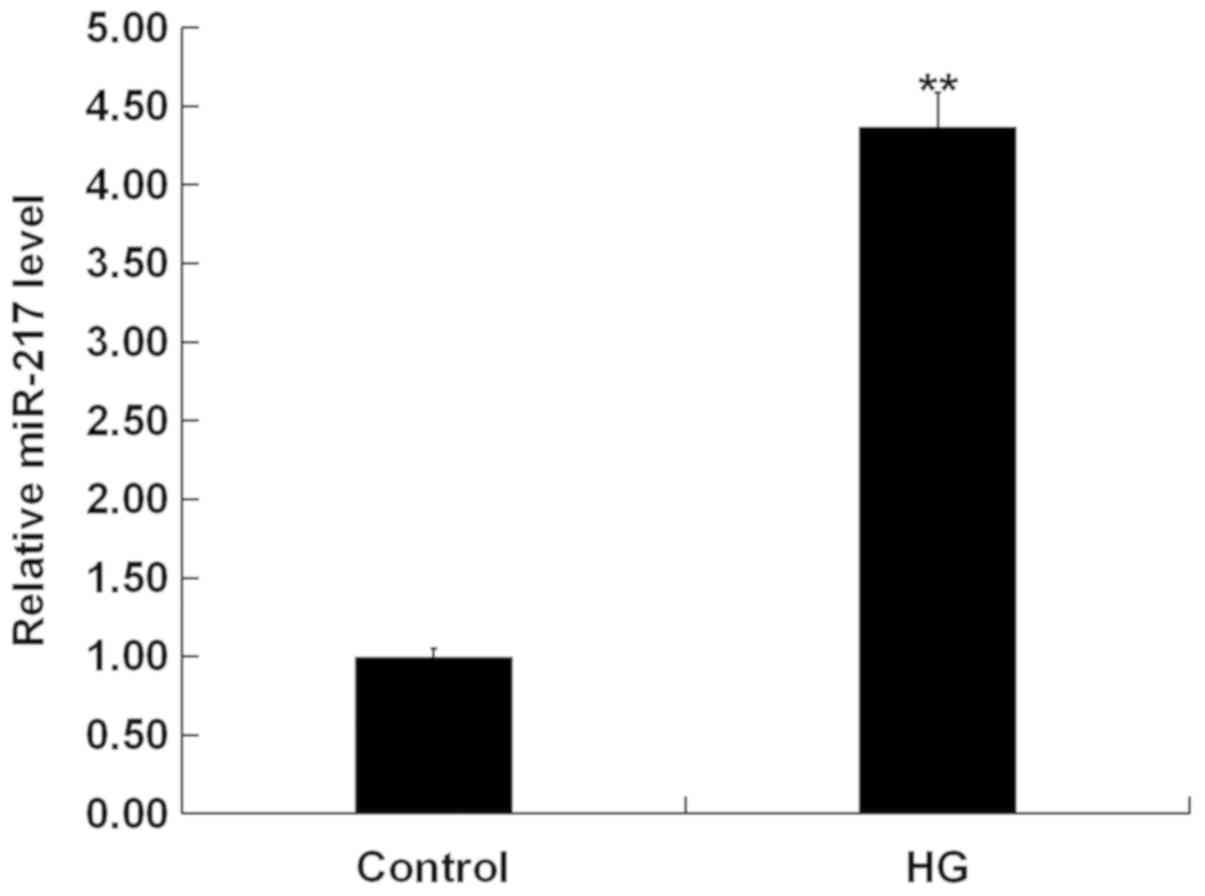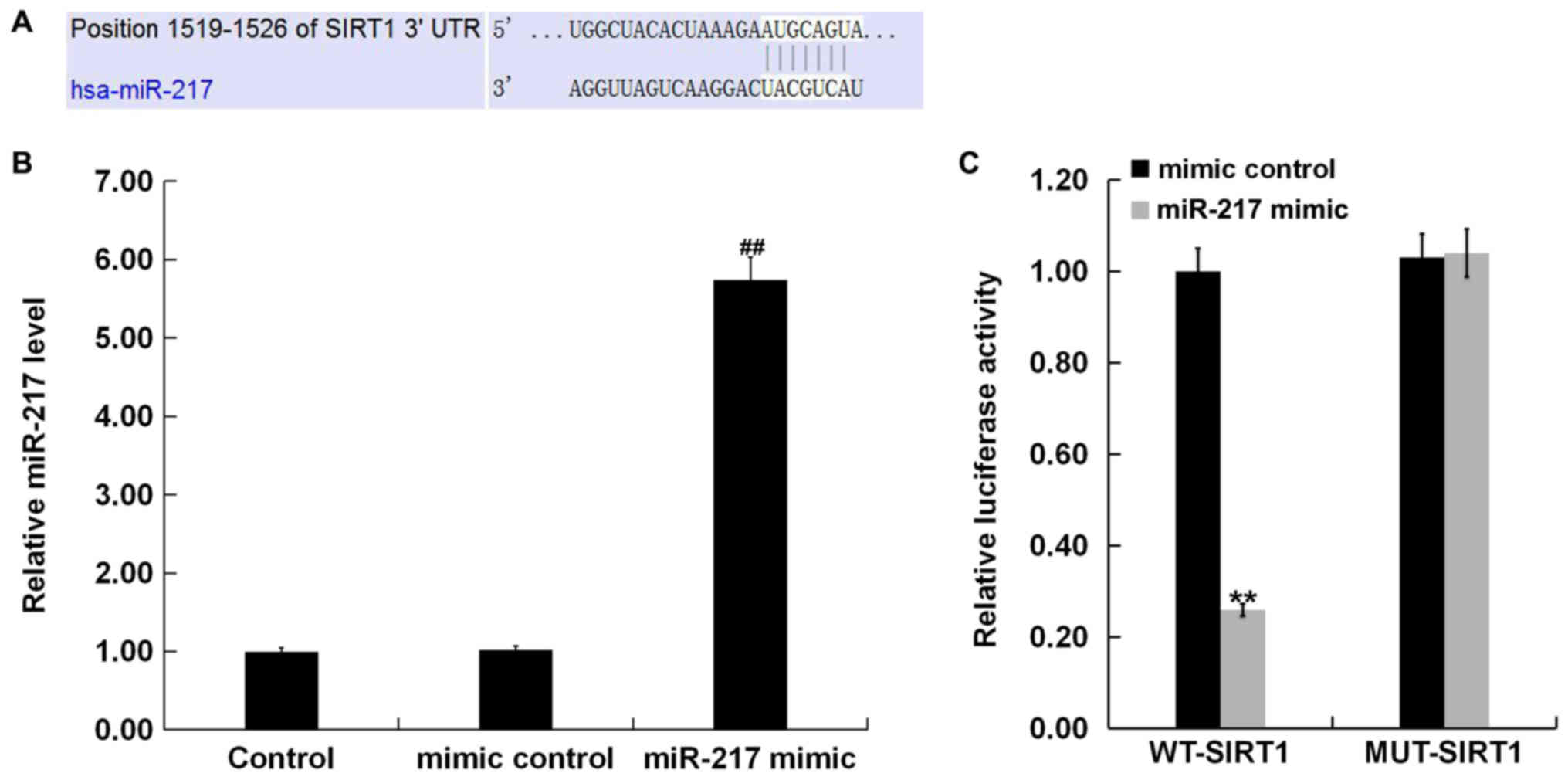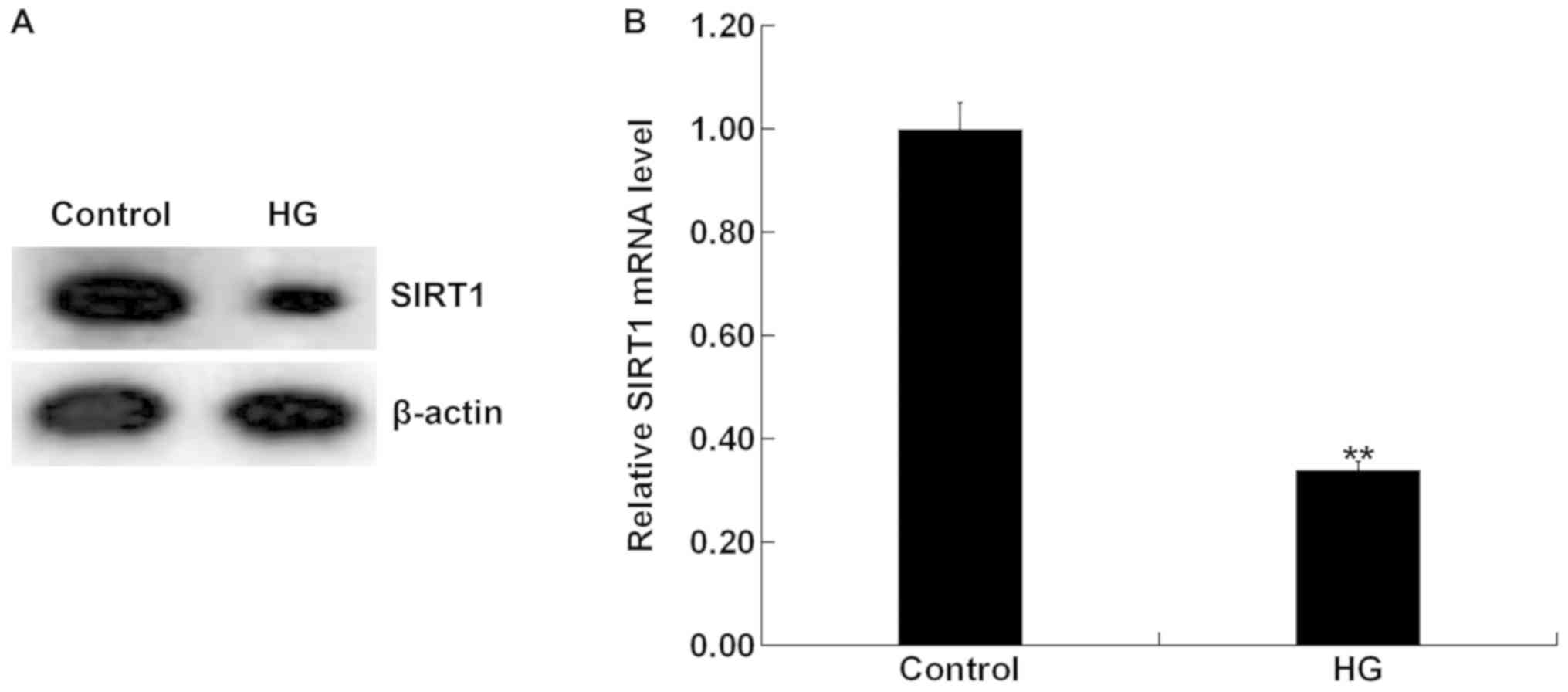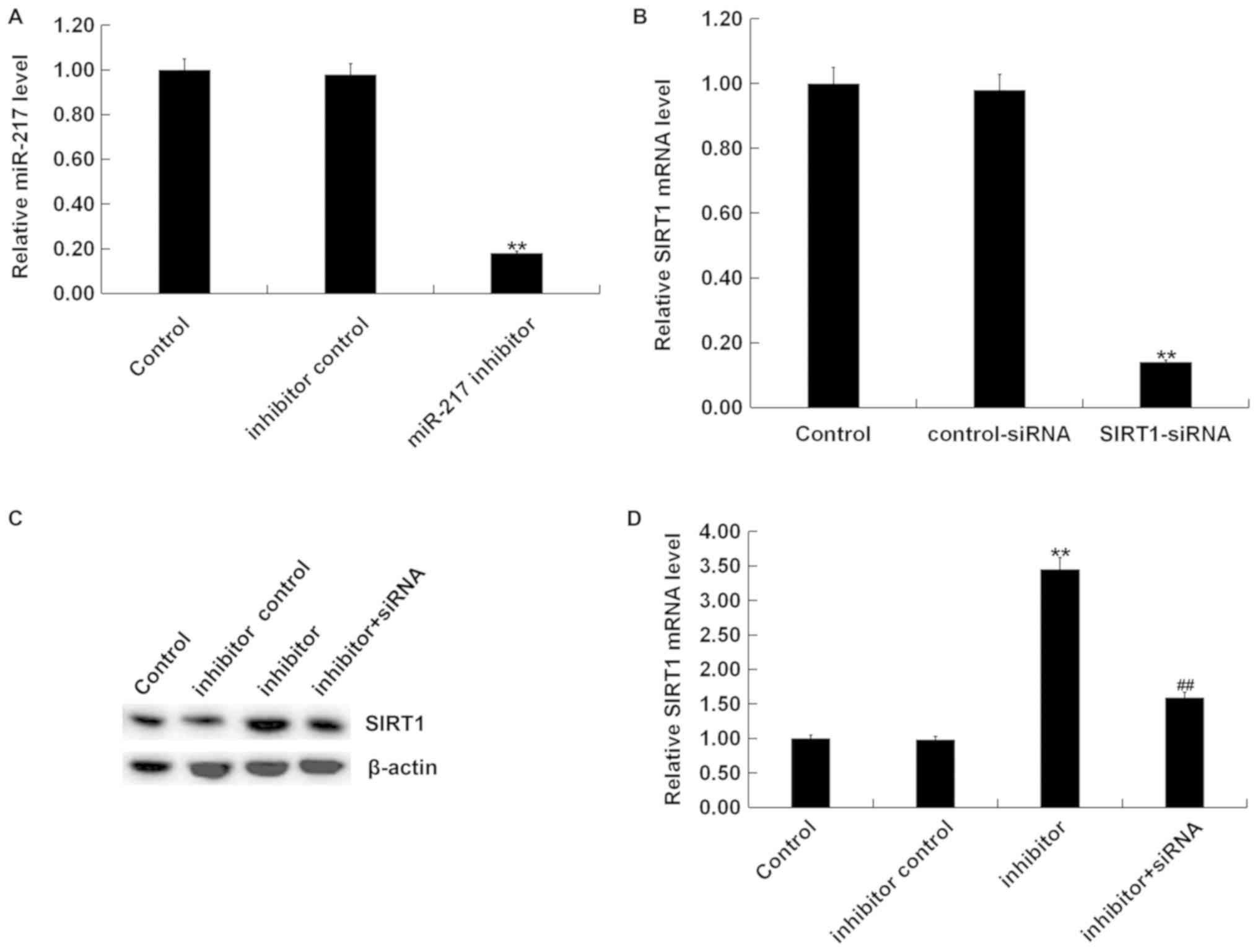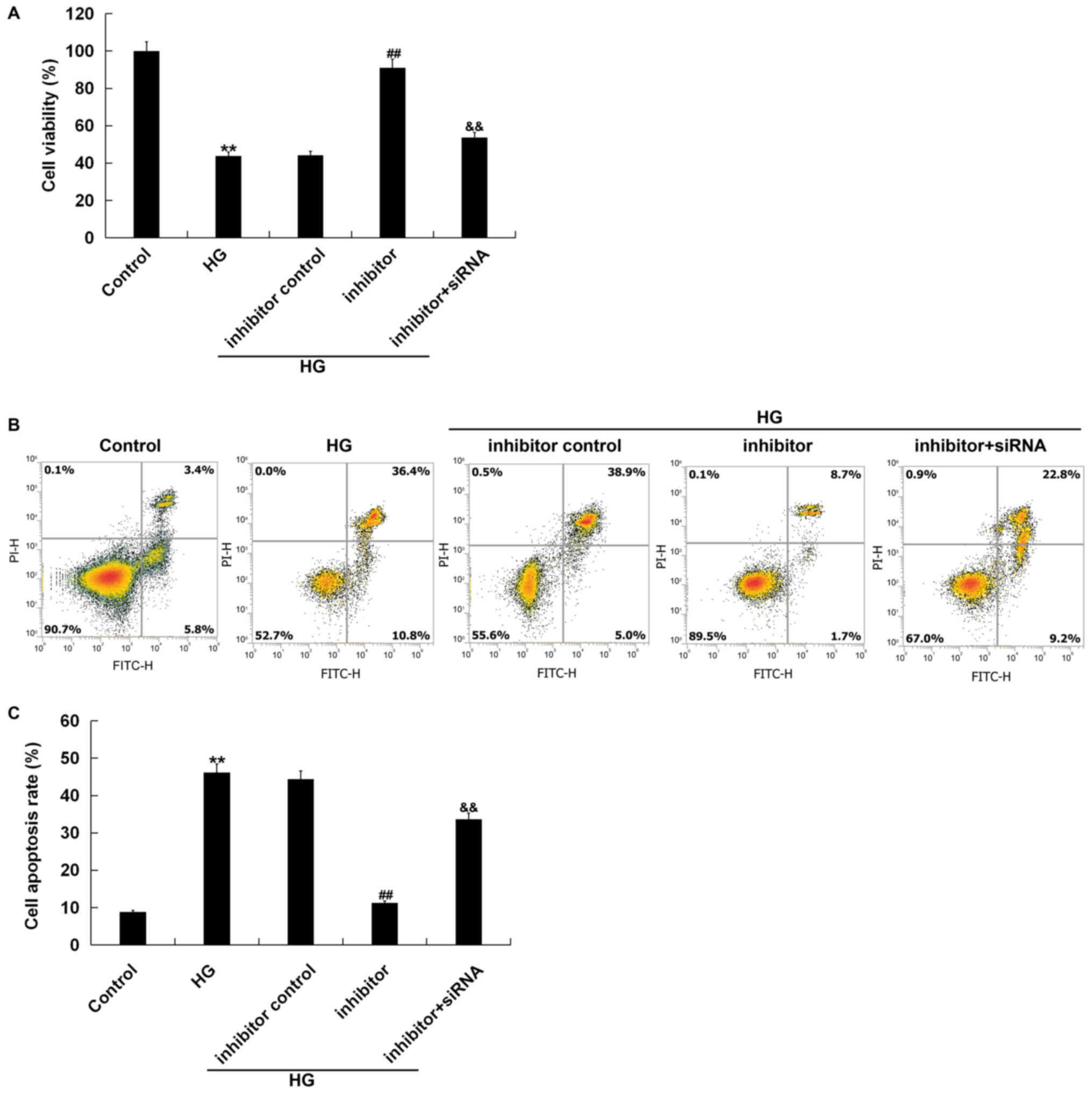|
1
|
Stewart MW: Treatment of diabetic
retinopathy: Recent advances and unresolved challenges. World J
Diabetes. 7:333–341. 2016. View Article : Google Scholar : PubMed/NCBI
|
|
2
|
Klein BE: Overview of epidemiologic
studies of diabetic retinopathy. Ophthalmic Epidemiol. 14:179–183.
2007. View Article : Google Scholar : PubMed/NCBI
|
|
3
|
Yau JW, Rogers SL, Kawasaki R, Lamoureux
EL, Kowalski JW, Bek T, Chen SJ, Dekker JM, Fletcher A, Grauslund
J, et al: Global prevalence and major risk factors of diabetic
retinopathy. Diabetes Care. 35:556–564. 2012. View Article : Google Scholar : PubMed/NCBI
|
|
4
|
Wang CF, Yuan JR, Qin D, Gu JF, Zhao BJ,
Zhang L, Zhao D, Chen J, Hou XF, Yang N, et al: Protection of
tauroursodeoxycholic acid on high glucose-induced human retinal
microvascular endothelial cells dysfunction and
streptozotocin-induced diabetic retinopathy rats. J Ethnopharmacol.
185:162–170. 2016. View Article : Google Scholar : PubMed/NCBI
|
|
5
|
Siasos G, Gouliopoulos N, Moschos MM,
Oikonomou E, Kollia C, Konsola T, Athanasiou D, Siasou G, Mourouzis
K, Zisimos K, et al: Role of endothelial dysfunction and arterial
stiffness in the development of diabetic retinopathy. Diabetes
Care. 38:e9–e10. 2015. View Article : Google Scholar : PubMed/NCBI
|
|
6
|
Frank RN: Diabetic retinopathy. N Engl J
Med. 350:48–58. 2004. View Article : Google Scholar : PubMed/NCBI
|
|
7
|
Mizutani M, Kern TS and Lorenzi M:
Accelerated death of retinal microvascular cells in human and
experimental diabetic retinopathy. J Clin Invest. 97:2883–2890.
1996. View Article : Google Scholar : PubMed/NCBI
|
|
8
|
Schroder K, Zhou R and Tschopp J: The
NLRP3 inflammasome: A sensor for metabolic danger? Science.
327:296–300. 2010. View Article : Google Scholar : PubMed/NCBI
|
|
9
|
Roy S, Kern TS, Song B and Stuebe C:
Mechanistic insights into pathological changes in the diabetic
retina: Implications for targeting diabetic retinopathy. Am J
Pathol. 187:9–19. 2017. View Article : Google Scholar : PubMed/NCBI
|
|
10
|
Curtis TM, Gardiner TA and Stitt AW:
Microvascular lesions of diabetic retinopathy: Clues towards
understanding pathogenesis? Eye (Lond). 23:1496–1508. 2009.
View Article : Google Scholar : PubMed/NCBI
|
|
11
|
Spijkerman AM, Gall MA, Tarnow L, Twisk
JW, Lauritzen E, Lund-Andersen H, Emeis J, Parving HH and Stehouwer
CD: Endothelial dysfunction and low-grade inflammation and the
progression of retinopathy in type 2 diabetes. Diabet Med.
24:969–976. 2007. View Article : Google Scholar : PubMed/NCBI
|
|
12
|
Shin ES, Sorenson CM and Sheibani N:
Diabetes and retinal vascular dysfunction. J Ophthalmic Vis Res.
9:362–373. 2014.PubMed/NCBI
|
|
13
|
Toma L, Stancu CS, Botez GM, Sima AV and
Simionescu M: Irreversibly glycated LDL induce oxidative and
inflammatory state in human endothelial cells; added effect of high
glucose. Biochem Biophys Res Commun. 390:877–882. 2009. View Article : Google Scholar : PubMed/NCBI
|
|
14
|
Cunha-Vaz J, Bernardes R and Lobo C:
Blood-retinal barrier. Eur J Ophthalmol. 21 (Suppl 6):S3–S9. 2011.
View Article : Google Scholar : PubMed/NCBI
|
|
15
|
Lorenzi M and Gerhardinger C: Early
cellular and molecular changes induced by diabetes in the retina.
Diabetologia. 44:791–804. 2001. View Article : Google Scholar : PubMed/NCBI
|
|
16
|
Zhang P, Zhang Z and Kador PF: Polyol
effects on growth factors and MAPK signaling in rat retinal
capillary cells. J Ocul Pharmacol Ther. 30:4–11. 2014. View Article : Google Scholar : PubMed/NCBI
|
|
17
|
Poy MN, Eliasson L, Krutzfeldt J, Kuwajima
S, Ma X, Macdonald PE, Pfeffer S, Tuschl T, Rajewsky N, Rorsman P
and Stoffel M: A pancreatic islet-specifc microRNA regulates
insulin secretion. Nature. 432:226–230. 2004. View Article : Google Scholar : PubMed/NCBI
|
|
18
|
Wang Q, Liu N, Yang X, Tu L and Zhang X:
Small RNA-mediated responses to low- and high-temperature stresses
in cotton. Sci Rep. 6:355582016. View Article : Google Scholar : PubMed/NCBI
|
|
19
|
Lim LP, Lau NC, Garrett-Engele P, Grimson
A, Schelter JM, Castle J, Bartel DP, Linsley PS and Johnson JM:
Microarray analysis shows that some microRNAs downregulate large
numbers of target mRNAs. Nature. 433:769–773. 2005. View Article : Google Scholar : PubMed/NCBI
|
|
20
|
Bartel DP: MicroRNAs: Genomics,
biogenesis, mechanism, and function. Cell. 116:281–297. 2004.
View Article : Google Scholar : PubMed/NCBI
|
|
21
|
Mendell J and Olson E: MicroRNAs in stress
signaling and human disease. Cell. 148:1172–1187. 2012. View Article : Google Scholar : PubMed/NCBI
|
|
22
|
Wei R, Deng Z and Su J: miR-217 targeting
Wnt5a in osteosarcoma functions as a potential tumor suppressor.
Biomed. Pharmacother. 72:158–164. 2015. View Article : Google Scholar
|
|
23
|
Yin H, Liang X, Jogasuria A, Davidson NO
and You M: miR-217 regulates ethanolinduced hepatic inflammation by
disrupting sirtuin 1-lipin-1 signaling. Am J Pathol. 185:1286–1296.
2015. View Article : Google Scholar : PubMed/NCBI
|
|
24
|
Azam AT, Bahador R, Hesarikia H, Shakeri M
and Yeganeh A: Downregulation of microRNA-217 and microRNA-646 acts
as potential predictor biomarkers in progression, metastasis, and
unfavorable prognosis of human osteosarcoma. Tumour Biol.
37:5769–5773. 2016. View Article : Google Scholar : PubMed/NCBI
|
|
25
|
Popov A, Szabo A and Mandys V: Small
nucleolar RNA U91 is a new internal control for accurate microRNAs
quantifcation in pancreatic cancer. BMC Cancer. 15:7742015.
View Article : Google Scholar : PubMed/NCBI
|
|
26
|
Yin Z and Ren W: MicroRNA-217 acts as a
tumor suppressor and correlates with the chemoresistance of
cervical carcinoma to cisplatin. OncoTargets and Terapy.
12:759–771. 2019. View Article : Google Scholar
|
|
27
|
Guo J, Feng Z, Huang Z, Wang H and Lu W:
MicroRNA-217 functions as a tumour suppressor gene and correlates
with cell resistance to cisplatin in lung cancer. Mol Cells.
37:664–671. 2014. View Article : Google Scholar : PubMed/NCBI
|
|
28
|
Lin CJ, Lan YM, Ou MQ, Ji LQ and Lin SD:
Expression of miR-217 and HIF-1α/VEGF pathway in patients with
diabetic foot ulcer and its effect on angiogenesis of diabetic foot
ulcer rats. J Endocrinol Invest. May 11–2019.doi:
10.1007/s40618-019-01053-2 (Epub ahead of print). View Article : Google Scholar
|
|
29
|
Sun J, Li ZP, Zhang RQ and Zhang HM:
Repression of miR-217 protects against high glucose-induced
podocyte injury and insulin resistance by restoring PTEN-mediated
autophagy pathway. Biochem Biophys Res Commun. 483:318–324. 2017.
View Article : Google Scholar : PubMed/NCBI
|
|
30
|
Shao Y, Lv C, Wu C, Zhou Y and Wang Q:
Mir-217 promotes inflammation and fibrosis in high glucose cultured
rat glomerular mesangial cells via Sirt1/HIF-1α signaling pathway.
Diabetes Metab Res Rev. 32:534–543. 2016. View Article : Google Scholar : PubMed/NCBI
|
|
31
|
Shao Y, Ren H, Lv C, Ma X, Wu C and Wang
Q: Changes of serum Mir-217 and the correlation with the severity
in type 2 diabetes patients with different stages of diabetic
kidney disease. Endocrine. 55:130–138. 2017. View Article : Google Scholar : PubMed/NCBI
|
|
32
|
Livak KJ and Schmittgen TD: Analysis of
relative gene expression data using real-time quantitative PCR and
the 2(-Delta Delta C(T)) method. Methods. 25:402–408. 2001.
View Article : Google Scholar : PubMed/NCBI
|
|
33
|
Leal EC, Aveleira CA, Castilho AF, Serra
AM, Baptista FI, Hosoya K, Forrester JV and Ambrósio AF: High
glucose and oxidative/nitrosative stress conditions induce
apoptosis in retinal endothelial cells by a caspase-independent
pathway. Exp Eye Res. 88:983–991. 2009. View Article : Google Scholar : PubMed/NCBI
|
|
34
|
Fan Y, Qiao Y, Huang J and Tang M:
Protective effects of panax notoginseng saponins against high
glucose-induced oxidativeinjury in rat retinal capillary
endothelial cells. Evid Based Complement Alternat Med.
2016:53263822016. View Article : Google Scholar : PubMed/NCBI
|
|
35
|
Rassi DM, De Paiva CS, Dias LC, Módulo CM,
Adriano L, Fantucci MZ and Rocha EM: Review: MicroRNAS in ocular
surface and dry eye diseases. Ocul Surf. 15:660–669. 2017.
View Article : Google Scholar : PubMed/NCBI
|
|
36
|
Romano GL, Platania CBM, Drago F, Salomone
S, Ragusa M, Barbagallo C, Di Pietro C, Purrello M, Reibaldi M,
Avitabile T, et al: Retinal and circulating miRNAs in age-related
macular degeneration: An in vivo animal and human study. Front
Pharmacol. 8:1682017. View Article : Google Scholar : PubMed/NCBI
|
|
37
|
Ma J, Wang J, Liu Y, Wang C, Duan D, Lu N,
Wang K, Zhang L, Gu K, Chen S, et al: Comparisons of serum miRNA
expression profiles in patients with diabetic retinopathy and type
2 diabetes mellitus. Clinics (Sao Paulo). 72:111–115. 2017.
View Article : Google Scholar : PubMed/NCBI
|
|
38
|
Gong Q and Su G: Roles of miRNAs and long
noncoding RNAs in the progression of diabetic retinopathy. Biosci
Rep. 37:BSR201711572017. View Article : Google Scholar : PubMed/NCBI
|
|
39
|
Jiang Y, Sang Y and Qiu Q: microRNA-383
mediates high glucose-induced oxidative stress and apoptosis in
retinal pigment epithelial cells by repressing peroxiredoxin 3. Am
J Transl Res. 9:2374–2383. 2017.PubMed/NCBI
|
|
40
|
Ying H and Yan Y: MicroRNA-145 attenuates
high glucose-induced oxidative stress and inflammation in retinal
endothelial cells through regulating TLR4/NF-κB signaling. Life
Sci. 207:212–218. 2018. View Article : Google Scholar : PubMed/NCBI
|
|
41
|
Zhao WG, Yu SN, Lu ZH, Ma YH, Gu YM and
Chen J: The miR-217 microRNA functions as a potential tumor
suppressor in pancreatic ductal adenocarcinoma by targeting KRAS.
Carcinogenesis. 31:1726–1733. 2010. View Article : Google Scholar : PubMed/NCBI
|
|
42
|
Li H, Fan J, Yin Z, Wang F, Chen C and
Wang DW: Identification of cardiac-related circulating microRNA
profile in human chronic heart failure. Oncotarget. 7:33–45.
2016.PubMed/NCBI
|
|
43
|
Lian B, Yang D, Liu Y, Shi G, Li J, Yan X,
Jin K, Liu X, Zhao J, Shang W and Zhang R: miR-128 Targets the
SIRT1/ROS/DR5 pathway to sensitize colorectal cancer to
TRAIL-induced apoptosis. Cell Physiol Biochem. 49:2151–2162. 2018.
View Article : Google Scholar : PubMed/NCBI
|
|
44
|
Lu Y, Tan L and Wang X: Circular
HDAC9/microRNA-138/Sirtuin-1 pathway mediates synaptic and amyloid
precursor protein processing deficits in Alzheimer's disease.
Neurosci Bull. Mar 18–2019.doi: 10.1007/s12264-019-00361-0 (Epub
ahead of print).
|
|
45
|
Sun QR, Zhang X and Fang K: Phenotype of
vascular smooth muscle cells (VSMCs) is regulated by miR-29b by
targeting Sirtuin 1. Med Sci Monit. 24:6599–6607Yue. 2018.
View Article : Google Scholar : PubMed/NCBI
|
|
46
|
Borji M, Nourbakhsh M, Shafiee SM, Owji
AA, Abdolvahabi Z, Hesari Z, Ilbeigi D, Seiri P and Yousefi Z:
Down-regulation of SIRT1 expression by mir-23b contributes to lipid
accumulation in HepG2 Cells. Biochem Genet. 57:507–521. 2019.
View Article : Google Scholar : PubMed/NCBI
|
|
47
|
Karbasforooshan H and Karimi G: The role
of SIRT1 in diabetic retinopathy. Biomed Pharmacother. 97:190–194.
2018. View Article : Google Scholar : PubMed/NCBI
|
|
48
|
Mishra M, Duraisamy AJ and Kowluru RA:
Sirt1: A guardian of the development of diabetic retinopathy.
Diabetes. 67:745–754. 2018. View Article : Google Scholar : PubMed/NCBI
|
|
49
|
Wang W, Zhang Y, Jin W, Xing Y and Yang A:
Catechin weakens diabetic retinopathy by inhibiting the expression
of NF-κB signaling pathway-mediated inflammatory factors. Ann Clin
Lab Sci. 48:594–600. 2018.PubMed/NCBI
|
|
50
|
Yin Y, Chen F, Wang W, Wang H and Zhang X:
Resolvin D1 inhibits inflammatory response in STZ-induced diabetic
retinopathy rats: Possible involvement of NLRP3 inflammasome and
NF-κB signaling pathway. Mol Vis. 23:242–250. 2017.PubMed/NCBI
|
|
51
|
Kim SJ, Yoo WS, Choi M, Chung I, Yoo JM
and Choi W: Increased O-GlcNAcylation of NF-κB enhances retinal
ganglion cell death in streptozotocin-induced diabetic retinopathy.
Curr Eye Res. 41:249–257. 2016. View Article : Google Scholar : PubMed/NCBI
|
|
52
|
Tey SK, Tse EYT, Mao X, Ko FCF, Wong AST,
Lo RC, Ng IO and Yam JWP: Nuclear Met promotes hepatocellular
carcinoma tumorigenesis and metastasis by upregulation of TAK1 and
activation of NF-κB pathway. Cancer Lett. 411:150–161. 2017.
View Article : Google Scholar : PubMed/NCBI
|















